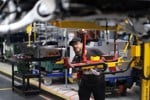Public sector fleets facing a further squeeze on budgets are working hard to improve the safety and efficiency of their vehicle operations.
Government departments, local authorities and blue light fleets have endured swingeing cuts during the past five years and, with the Conservatives now holding the balance of power at Westminster, they are bracing themselves for further belt-tightening.
However, delegates at a recent public sector roundtable sponsored by Alphabet told Fleet News they sometimes face an uphill challenge winning approval for any changes they want to implement. A strong union presence in the public sector means fleet decision-makers must tread a careful path with employees and their representatives. Securing their buy-in is crucial to successfully implementing any changes to the way the fleet is managed.
The use of technology to monitor driver behaviour for example, has been a difficult sell for fleets in the public sector. Fleet managers recognise the potential savings available through the use of telematics, with fuel, accident rates and service, maintenance and repair all areas that can benefit. However, delegates described the need to take a piecemeal approach, while also focusing on the need to change hearts and minds.
Motivated by a desire to improve duty of care and cut costs, reducing accident rates has been a key target for many fleets both in the public and private sector.
Delegates shared their experiences, successes and challenges in strengthening their duty of care obligations, while driving down costs.
What measures are you employing to drive down your accident rate?
Gillian Joyce: We’re still very much at the start of our journey, but what we’ve done first is improve our reporting. Since the start of this financial year, we’ve introduced much more robust processes with driver accountability now key. There’s a focus on evidence gathering at the scene, providing more detailed reports, and we are reporting to our insurers within 24 hours. It’s also important that we ensure a consistent approach to enable us to identify any trends.
Rick Young: What we did was focus on in-life vehicle management. Drivers have to report any damage and vehicles are inspected by team leaders every month. As a result, our end-of-lease costs have fallen from around £1,200 per vehicle to under £200 per vehicle. It not only ensures we don’t get any nasty surprises when we come to defleet, but it also means the vehicles always look good when they’re out and about.
How do you measure your accident rates?
Delegates
Larry Bannon
National fleet services manager, NHS Blood and Transplant
Gillian Joyce
National fleet manager, Post Office
Graham Telfer
Fleet manager, facilities management, leisure and transport services, Gateshead Council
Ian Jutson
Strategic fleet manager, Environment Agency
Rick Young
Fleet manager, WDH (Wakefield and District Housing)
Claire Marsden
Senior supply chain manager, Atkins
Dean Hedger
Head of public sector, Alphabet
Simon Barr
Public sector sales and business development manager, Alphabet
Claire Marsden: I’m currently upgrading our reporting, because historically we’ve just recorded the number of incidents. We don’t use mileage, but that’s what we’re working towards.
Larry Bannon: We use a number of matrices. For example, the number of at-fault incidents per mile travelled, which was the matrix used in the Fleet Van Awards. There is a measurement by type of vehicle too, but what we also do is a year-on-year comparison to show where we are going.
We have a very low at-fault incident rate for the mileage that we do, thanks to a robust driver training regime, and we’re now bringing technology on board.
Do you use telematics to tackle driver behaviour?
Larry Bannon: We’ve only had telematics in our vehicles since last October so we’re still learning what the data is telling us and what we have to do in terms of duty of care now we have this information.
It came as a requirement to a greater operational system that we have just implemented. The benefit from that is we’re also able to look at driver behaviour, which we couldn’t do before. And, as much as we pride ourselves in the way we train and refresh our drivers on an ongoing basis, once they’re out in that vehicle we wouldn’t know any different.
It’s still early days, but we’re already seeing results, and we’ve been able to reduce the vehicle fleet on our operational side, because we’ve been able to sweat our assets a bit more than we thought we could.
How difficult is it to gain employee and union acceptance of technology that monitors your drivers?
Larry Bannon: We’re looking to introduce cameras with our next tranche of vehicles and we had to go through a whole process of consultation with our drivers and with our staff/site representatives – the unions – about the benefits.
Some organisations, particularly in the private sector, are able to say we’re implementing this and that’s that. For us, it’s about doing a little bit at a time.
Gillian Joyce: Cameras are fitted to our cash-in-transit fleet. We had a number of issues with the union to begin with, but we’ve just had to push along, because it was like wading through treacle.
We’ve started to use the information to show drivers are at fault, but we’re also seeing drivers use it for their own benefit. A driver who was recently involved in an incident was keen to see what the footage showed, because he was adamant that it wasn’t his fault and we were quickly able to establish it wasn’t. We are changing mindsets, but we had to push along without the unions.
Is it a questions of stressing the benefits to win their support?
Larry Bannon: Yes, we believe this will give us evidence to support our drivers more than it will be used for conduct situations. We want to focus on what’s good.
Ian Jutson: We recognised it was about winning hearts and minds, so we began by introducing telematics into 50 vehicles for a trial, with a focus on safety. It fitted in with an overarching ‘safe and well’ policy at the agency, which is about ensuring everybody who comes to work goes home safe and well.
It was on that basis we spoke to the unions about introducing the trial and the benefits. It enabled us to prove the concept, but it has still taken nine months to get the agreement from the unions to install telematics across the commercial fleet and we’re still considering whether to roll it out with the leased car fleet.
Is fitting telematics into a car fleet a more difficult argument to win?
Ian Jutson: Yes, because of the private use element. We have 100 units identified for a lease car trial, but part of the negotiations with the unions is focused on having a privacy switch for when the vehicle is not being driven on business.
Improving driver safety has clearly helped win approval for the introduction of technology, but what else has helped win hearts and minds?
Graham Telfer: We’ve introduced technology progressively rather than carte blanche. We use route optimisation on one group of vehicles to save fuel; we use tracking for some of our vans and vulnerable users, and we also use Lightfoot to monitor driver behaviour. But, with fuel equating to 40% of my costs now, that is one of our main drivers, as well as reducing accidents.
Simon Barr: The beauty is they can be tackled together, because if you change driver habits for the better, by definition you should cut down on fuel and reduce your accidents.
Graham Telfer: As a result of the austerity message, unions and staff realise the position we’re in and the savings we have to make. We’re looking at £35m of savings again next year and people are more realistic now.
If we tried to introduce this 10 years ago it would be like coming up against a brick wall, whereas now people understand the level of cost control required.
In terms of cutting costs, has anybody considered alternatively fuelled vehicles?
Graham Telfer: I’ve run hybrid gas, LNG, CNG and, while we have gone back to petrol in some of our smaller vans, we will be using diesel for the next 50 years. I’m an absolute advocate of electric vehicles, but when you can go out and buy a car or a van for £7,000, how do you make the economics stack up? If you use a fast charger at a certain time of day you will pay more in running costs than for a diesel vehicle.
Simon Barr: The wholelife cost issue has to be measured properly. We’ve been looking at London, where certain diesel vehicles are going to face a £10 surcharge on top of the congestion charge and all of a sudden it makes electric vehicles a very attractive option. However, it’s not a silver bullet for every single vehicle on the road, regardless of what some people may think.



















Login to comment
Comments
No comments have been made yet.